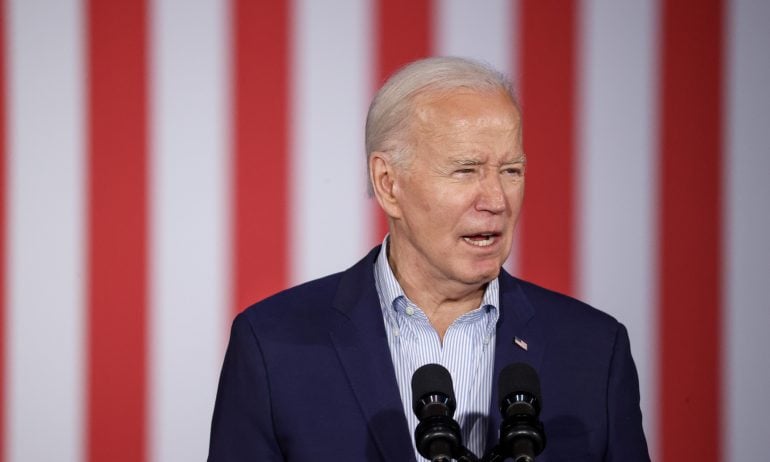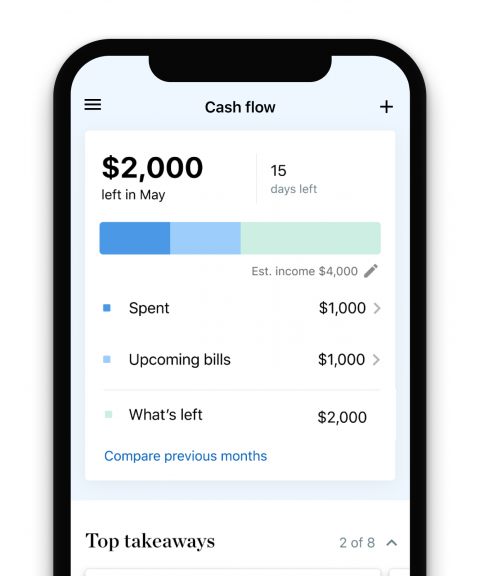Updated on July 21.
Biden steps out of the election, endorses Kamala Harris
On Sunday, Biden announced he was dropping out of the election amidst pressure to do so from the public and other Democrats.
As recently as Friday, the president, who is recovering from COVID-19, said he was planning to get back on the campaign trail in the upcoming week. In a statement released on Sunday, Biden said, “It has been the greatest honor of my life to serve as your President. And while it has been my intention to seek reelection, I believe it is in the best interest of my party and the country for me to stand down and to focus solely on fulfilling my duties as President for the remainder of my term.” Biden added that he would be speaking further later this week.
Shortly after Biden’s statement was released, he posted on X, formerly Twitter, that he was endorsing Vice President Kamala Harris to be the Democrats’ presidential nominee. The party will vote on its nominee — whether it is Harris or another candidate — at its national convention set for Aug. 19-22.
Harris released a statement via X on Sunday calling Biden’s move “selfless and patriotic” and expressing her honor to receive his support. She added, “Over the past year, I have traveled across the country, talking with Americans about the clear choice in this momentous election. And that is what I will continue to do in the days and weeks ahead. I will do everything in my power to unite the Democratic Party — and unite our nation — to defeat Donald Trump and his extreme Project 2025 agenda.”
The Democratic National Committee released its own statement on X on Sunday saying, “The work that we must do now, while unprecedented, is clear. In the coming days, the Party will undertake a transparent and orderly process to move forward as a united Democratic Party with a candidate who can defeat Donald Trump in November.”
The Republican National Committee also released a statement on X on Sunday following the president’s announcement saying, “Not only would Harris be a disaster in the White House, but she also helped Biden cover up his declining health while in office, which destroys her credibility.”
Who is leading in the polls?
CBS/YouGov: Trump leads Harris 51% to 48% (July 16-18).
Reuters/Ipsos: Harris and Trump are evenly matched at 44% each (July 16).
Siena College/New York Times: A poll conducted from July 9 to July 12 turned to two swing states: In Pennsylvania, Trump leads Harris 48% to 47% among likely voters while in Virginia, Harris leads Trump 49% to 44%. (July 9-12).
The Economist/YouGov: Trump leads Harris 44% to 39% (July 13-16).
Marist College/NPR,PBS NewsHour: Harris leads Trump 50% to 49% (July 12).
“Bidenomics” is the nickname for the economic vision of President Joe Biden. It’s used to convey his administration's economic gains, policies and plans.
What is Bidenomics?
Bidenomics is essential to Biden’s messaging about the strength of the economy under his administration. Here are some insights into what Bidenomics would look like during a second term, along with opinions of economists on how those plans could unfold.

Bidenomics is a wordplay on Reaganomics, the nickname for the Reagan administration’s economic policies, which emphasized four pillars: tax cuts, deregulation, domestic spending cuts and inflation reduction.
Bidenomics, according to the White House, is a rejection of the trickle-down economic policies that defined Reaganomics.
The three pillars of his economic agenda are:
Making public investments. Biden’s administration says targeted public investment can attract more private sector investment. The White House specifically points to priority investments in infrastructure, semiconductors, clean energy and climate security. Some of those critical investments were part of the Inflation Reduction Act (IRA); the CHIPS and Science Act; as well as the Infrastructure Investment and Jobs Act.
Empowering and educating workers to grow the middle class. Biden’s administration has pointed to a strong recovery in employment defined by low unemployment and high labor force participation as one of its victories. It asserts a commitment to education at all levels including free universal pre-K, free community college, as well as investment in registered apprenticeships and career technical education programs. The administration also says it supports empowering workers by easing barriers to joining a union.
Promoting competition to lower costs and help entrepreneurs and small businesses to thrive. The administration has been committed to antitrust laws to promote competition and says its efforts have paid off. It is also committed to lowering costs for consumers, fighting junk fees and making it easier for new products to enter the market.
One of Biden’s most impactful actions during the early part of his presidency was the American Rescue Plan, a $1.9 trillion stimulus package in response to the pandemic. It provided emergency grants, lending and investment to small businesses; $1,400 one-time per-person stimulus checks; temporarily increased the Child Tax Credit; temporarily extended unemployment benefits; and lowered health insurance premiums.
What experts say about Biden’s economic plans
Since Biden first took office, the economy has been defined by opposing forces, namely sky-high inflation and a relentlessly robust labor market. While price increases are slowing, costs remain elevated for the things consumers tend to care most about, especially staples like groceries and gas. The Federal Reserve’s attempts to tame inflation by hiking interest rates has led to the highest mortgage rates in 23 years — making homeownership more unattainable for everyday Americans.
This all means, that despite boasting some of the lowest unemployment figures in more than 50 years and steadily stabilizing price growth, the Biden administration has struggled against negative perceptions of the economy and the ever-present threat of a recession on the horizon.
Prior to Biden's departure from the election, some experts project that Biden’s approach to handling the economy would have been better than Trump's. A letter signed by 16 Nobel Prize winning economists claims, “we all agree that Joe Biden’s economic agenda is vastly superior to Donald Trump’s,” as first reported by Axios on June 25. The economists went on to tout the economic investments that Biden made during his presidency — “including in infrastructure, domestic manufacturing and climate” — along with the labor market recovery supported by Biden’s stimulus. “These investments are likely to increase productivity and economic growth while lowering long-term inflationary pressures and facilitating the clean energy transition,” they wrote.
A June report by Moody’s Analytics, a research division of one of the world’s most prominent bond-rating agencies, says that under a second Biden term, “the economy remains near its potential.” That means, according to the report:
Enough job growth to maintain full employment. The rate would be close to 4%.
Steadily moderating inflation that hits the Fed’s 2% target by the summer of 2025.
Fed interest rate cuts later in 2024 to reduce the federal funds rate near 3% by the end of 2026.
Budget deficit stabilizing.
More than 5% of GDP growth.
The report assumes no new legislation would be passed in this situation, but emphasized that Biden’s existing policies such as the Infrastructure Investment and Jobs Act, the CHIPS Act and the Inflation Reduction Act would continue to shape the economy.
What happened at the first presidential debate?
At the first debate between President Joe Biden and former President Donald Trump on June 27, the candidates sparred as they each made their pitches to American voters. Both candidates’ performances proved problematic: Trump delivered a string of mendacious claims with gusto while Biden struggled to eke out complete sentences. Throughout the evening, Trump and Biden often traded barbs and meandered into non sequiturs.
However, Biden’s presentation was so troubling that it drew immediate speculation about how his age may hinder his chances for re-election.
To recap the debate, here’s what the candidates managed to say on major economic issues.
(Photo by Ian Maule/Getty Images News via Getty Images.)



